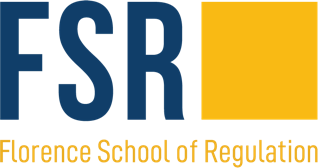From burden to backbone: EU bureaucracy as a driver of the clean transition
This is the second installment of the Topic of the Month: Trump’s effect on EU value chains
In 2023, the EU scrambled to respond to the US Inflation Reduction Act (IRA), a package of clean tech support unmatched for simplicity and scale. The US suddenly looked like the new centre of gravity for green investment, whilst Brussels faced familiar criticism for its response (the NZIA): too slow, too complicated, too small. But two years on, the tables may be turning.
A new US administration is moving to roll back IRA support, scale up fossil fuel production, and impose unprecedented tariffs on imports, including key components for US clean tech manufacturing. At the same time, the US has withdrawn from key international climate funds, sidelined multilateral institutions it once helped build, and is in the process of gutting its own domestic institutions.
In contrast to the US, the EU’s slower, bureaucratic approach (long seen as a liability) now looks increasingly like a source of stability for investors. Its regulatory consistency, clarity of vision, and commitment to multilateralism may emerge as advantages in the global green transition. In this short thought experiment, I consider a few (optimistic) scenarios of how changing political dynamics in the US could impact EU clean tech value chains.
US retreat from global climate action and multilateralism
The US position on international climate action has been very unstable. In his first term, President Trump withdrew the US from the landmark 2015 Paris Agreement, the Biden Administration rejoined in 2021, only for Trump to withdraw the US (again) on his first day back in office. The US has also now cancelled approximately $4BN in contributions it had previously committed to the United Nations Green Climate Fund, as well as withdrawing from the board of the United Nations climate damage fund, two key multilateral organisations for climate action in developing countries. Under President Biden, the US was one of the key backers of the Global Methane Pledge along with the EU. But that too is in the process of being reversed, as the US EPA rolls back policies to reduce methane emissions in the oil and gas sector.
Meanwhile, the US has blocked the appointment of new judges to the WTO’s Appellate Body, undermining its ability for enforcement of rules governing free trade. Moreover, the tariffs, subsidies, and local content requirements that characterised (to differing extents) the policies of the last three US administrations have consistently pushed up against the spirit (and rules) of the WTO.
These changes to US policy are troubling. The US have been central to building much of the institutional architecture for multilateral climate and trade cooperation, and many of the key institutions rely on US financing. Without US financial and political support, these institutions are significantly weakened, together with the norms of international engagement that they represent.
Some possible implications for the role and interests of the EU
There are too many compounding variables and feedback loops to predict what the aggregate results of this recent US policy evolution will be for the clean tech sector in the EU. In some areas, the consequences could be very damaging. However, we can also imagine some possible (optimistic) outcomes. The following four scenarios explore implications for: (1) manufacturers and investors, (2) energy intensive projects, (3) soft power and trade, (4) momentum for the decarbonisation agenda and broader European integration.
1. EU manufacturers become more competitive relative to their US counterparts
Firstly, tariffs imposed on exports to the US will increase costs for US clean tech manufacturers that rely on inputs and value chain segments from abroad, particularly where those value chains are already entrenched and substitutes are difficult (or impossible) to onshore. For example, battery manufacturers relying on lithium and copper from China, semi-conductors from Taiwan, or steel from Canada. These higher costs combined with the potential withdrawal of IRA subsidies could make US clean tech less competitive than manufacturers elsewhere, potentially increasing the attractiveness of EU tech by comparison.
Moreover, there are early signs that chaos and unpredictability in US policy may persuade investors to choose more stable markets, like the EU. These factors could advantage European clean tech manufacturers seeking finance, particularly as the EU continues to signal its intention to increase investment and streamline the regulatory burden.
2. EU energy-intensive projects could benefit from cheaper clean tech
Secondly, as the US market for clean tech products becomes less attractive for exporters, these products may get delivered to other markets, increasing supply and lowering prices. For example, a 125% tariff on Chinese exports to the US may encourage Chinese companies to sell some of those products to the EU instead, reducing prices for consumers. This could help accelerate the clean transition by reducing deployment costs. The effect could be particularly strong where projects have high upfront costs for clean tech, for example when producing energy-intensive products like renewable hydrogen.
This scenario would pose a strategic choice for the EU between cheap imported tech to support quicker decarbonisation and more competitive final products, or to protect domestic clean tech manufacturers through import tariffs and anti-dumping restrictions. In practice, it does not need to be such a binary choice between offshoring and protectionism. A middle ground could also be possible, where the EU chooses to encourage the import of certain technologies it cannot competitively substitute locally, whilst protecting the onshoring of others where the bloc has a clearer competitive advantage. For example, low tariffs on imported solar PV and transmission tech, but high tariffs on segments of the value chain closer to the finished product, like electrolysers, fuel cells, or batteries, where EU companies can realistically and competitively substitute imports with its own market-leading companies.
3. The EU exercises more soft power via leading on policy and institutions
Thirdly, with the US signalling its withdrawal from international rules-based, multilateral institutions, and dismantling its domestic institutions, the EU arguably has more space to exercise its soft power as a leader in regulation, policy, and cooperative free trade.
The EU was one of the first major economies to regulate on data privacy, via the General Data and Protection Regulation (GDPR), this has now become the global benchmark for digital privacy. Likewise, the EU Emissions Trading System (EU ETS) was the first international emissions trading system, and it has inspired other similar schemes around the world. With the Carbon Border Adjustment Mechanism (CBAM) the EU will also be the first to (effectively) export its carbon price to third countries, a novel approach to try and overcome some of the fundamental free-rider risk associated with first movers on climate tech. These innovations have meaningful ripple effects internationally, shaping international markets and policy.
Furthermore, as the US alienates traditional democratic and pro-trade allies like Canada, Australia, Japan, Mercosur, etc, there is arguably more space for the EU to do ‘minilateralism’ in small groups of ideologically aligned parties – now as the major partner. This could mean new markets for products, stronger alliances, and greater influence over multilateral institutions as a new centre of stability, transparency, and commitment to a rules-based system, with climate as a key pillar.
4. Global instability creates a stronger political mandate for European integration
Finally, the EU’s energy policy trifecta of ‘affordability, security, and sustainability’ was arguably effectively united and aligned after the Russian invasion of Ukraine in 2022, as local renewable energy became not only to be the cleanest, but now also the cheapest and the most secure, particularly in the mid to long term. The crisis also demonstrated the importance of European energy market integration as a source of resilience.
Since then, US LNG has taken over from Russian pipeline gas as the principal supplier of natural gas to the EU. Although natural gas has been left out of the tit-for-tat on tariffs so far, there is a risk that a trade war between the US and the EU (or other major economies) could again disrupt European energy markets. This arguably further clarifies the pathway to strategic autonomy and stable low prices for energy in the EU; clean, local, efficient, integrated.
Framing support for the clean transition also as an investment in security of critical public services, and an investment in the long-term competitiveness of European industry and public cost of living, could accelerate efforts on the clean transition. In practice, this might mean a stronger and clearer imperative of the ‘overriding public interest’ of renewable energy production and interconnection projects in Europe, as proposed in REPowerEU.
It might also be the push needed to take politically brave decisions to further ‘Europeanise’ innovation and decarbonisation funding with a view to unlocking greater efficiency and competitiveness. For example, taking radical steps like centralising 100% of ETS revenues through the EU and redistributing them geo-agnostically via a much stronger Innovation Fund. Currently, 75% of ETS revenues remain within the Member State where they were paid, which contributes to a reproduction of the existing industrial geography, rather than supporting the most competitive projects. To ensure Member States retain ‘value’ from a more European (re)distribution of funds, it could be possible to get creative with conditions of how Innovation Fund grants are spent, for example via content requirements for technology procurement.
It would not be the first time in recent years that the EU has managed to Europeanise it’s financing in the face of a crisis. The COVID-19 pandemic already forced some innovation through the design of the ‘Recovery and Resilience Facility’, which was financed by unprecedented use of common EU borrowing and issuance of green bonds. In any case, greater integration and Europeanisation of the tariff-free EU single market arguably becomes more attractive as tariffs go up around the rest of the world.
Conclusion
The speed and intensity of policy changes in the US since the new administration took office less than three months ago is quite unprecedented, and it is impossible to say what the implications will be for clean tech and climate policy in the EU. Nevertheless, historic losses on the US stock exchange, rumblings of anxieties amongst investors, and general uncertainty about what could come next, arguably start to make a slow, steady, stable regulatory environment like the EU seem a bit more attractive. As the US swings from subsidy to tariff, from climate leader to fossil fuel revivalist, Europe’s consistent commitment to rules-based governance and long-term decarbonisation may prove a competitive advantage.






